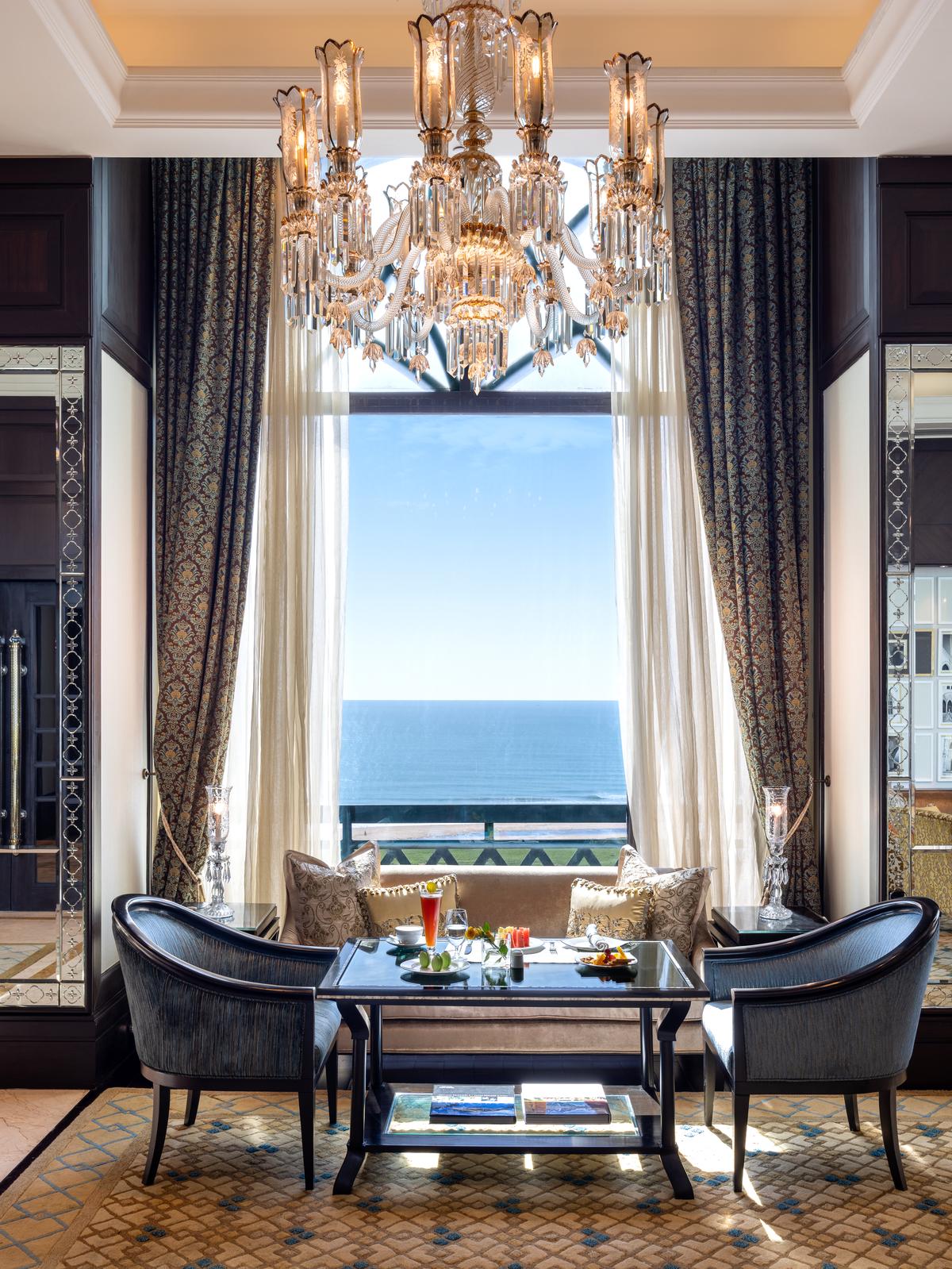Why Michelin thinks India has only 36 hotels worth a Key
The insufferable among us are ecstatic.
The Michelin Key, the hotel counterpart to the snooty Michelin Star, has finally arrived in the country. Sure, Michelin doesn’t yet deem us worthy of its restaurant guide even if Latvia is on it, but the one-year-old hotel guide is some consolation, perhaps a precursor to India’s long-overdue inclusion in the influential food book.
The Leela Palace is one of the 36 Indian properties — and the only one in Chennai — recognised with keys. Across the country, two hotels — the Taj Faluknama Palace in Hyderabad and the Taj Lake Palace in Udaipur — snagged three keys, 12 received two keys, and 22 were each awarded a key.
Now, I have a few misgivings about the brand that is The Leela. My parents think the dense drapes, bejewelled chairs you can’t sit in, and the expensive smells make for a hospitality haven. I, on the other hand, do not know what to make of all the maximalist glory.
Food at The Johri, Jaipur
| Photo Credit:
Special Arrangement
But The Leela Palace remains my preferred hotel in Chennai. It may not have the biggest rooms (those studios at Taj Wellington are massive) or the history (Taj Connemara, or at least its earliest iteration, is touted as the oldest luxury hotel in Chennai) or restaurants that perpetually feature on best-in-India lists (Avartana — the culinary gem that deserves every rhapsodising sobriquet heaped on it — is located in the ITC Grand Chola, and Southern Spice is at the Taj Coromandel). The Leela does have great views of a sea I have never seen blue.
And then there are the butlers. These super-competent relics, appropriately liveried in three-piece suits in Chennai’s humidity, hurl the hotel way past its competitors. Sure, the restaurants here may not have yet made any big lists, but they deserve patronage. I once partook of the weekend brunch at China XO and quite enjoyed the offerings. The Chennai Jamavar is almost as good as the one-starred London Jamavar, which is among my favourite Indian restaurants in the world. I’d say the Michelin recognition is well deserved.
Drinks at The Leela Palace, Chennai
| Photo Credit:
Special Arrangement
If the Chennai Leela received one key, Michelin conferred two keys each on Delhi’s Leela and Imperial. I can get behind both hotels. There’s very little lacking in them, and if The Corinthia in London deserves two keys, so do these properties. But I don’t find the Delhi Oberoi anywhere on the list. Which is where I start questioning the legitimacy of the guide. I can think of no other Indian city hotel that ticks the right boxes — beauty, service, food, history — as overwhelmingly as the Delhi Oberoi does. How then does the Michelin deem the Taj Palace, dated on its best days, in Delhi worthy of a key but overlook The Oberoi? These are questions that keep me up at night.
The beauty of lists is in the discourse they trigger. The exclusion of certain establishments is as much a source of debate fodder as the presence of others. How, the pretentious of the world wonder, did Eleven Madison Park in New York retain its three stars even when it briefly went vegan? Why was it that for a very long time, all of the US had only one Michelin-starred Indian restaurant in Semma while London alone had seven? Why is there such little overlap between The New York Times’ list of the best restaurants and The World’s 50 Best?

The Leela Palace, Chennai
| Photo Credit:
Special Arrangement
One could argue that the Michelin guide deserves no more or less thought than all other lists. But including just 36 establishments in India, which everyone knows has hundreds of the best hotels in the world, when London alone has 44 hotels with keys, is downright egregious. It feels … lazy. There’s not one Postcard property in the guide. There are too few Oberoi hotels. I have seen lesser St Regises and Four Seasons properties recognised abroad than those in Mumbai and Bengaluru.
What might the reasons be? Could it be that the hotel guide, nascent and still finding its footing, did a half-baked job? Or is our posh hospitality lacking? Is the constant kowtowing a turn-off for Michelin? I am aware that our earnestness doesn’t always translate to efficiency, and I do know a few Westerners who are bothered by the constant lingering of waiters at LOT (my abbreviation for The Leela, Oberoi, Taj triumvirate).
While on a semi-walking holiday in Cornwall and Devon this summer, we stayed at Idle Rocks in St Mawes and Lympstone Manor in Exmouth, both independent hotels inundated with flattering reviews. Unbeknownst to us, both the properties had just received one and two Michelin keys respectively. These hotels, especially Lympstone Manor, were gorgeous even if the well-meaning service was sometimes lacking, and I do not grudge their inclusion in the guide. What I question is why the Michelin inspectors deem such few Indian properties to be in the same league as these hotels. That infuriates me.

The Leela Palace, Chennai
| Photo Credit:
Special Arrangement
It’s a start, you say. This should be the cause for jubilation, you add. But I find it hard to jump in glee at a Western tyre company throwing leather scraps my country’s way. Sure, I’ll celebrate all these hotels. I am especially thrilled that five- and 10-room properties like The Johri in Jaipur and The Kumaon in the western Himalayan foothills got their due (I haven’t stayed at either but was impressed with a party at The Johri, where I ate some of the best vegetarian food in the world).
That still doesn’t make the disparity between the 317 Key hotels in America and only about a tenth of that in India any less ridiculous.
Published – November 21, 2025 05:03 pm IST


